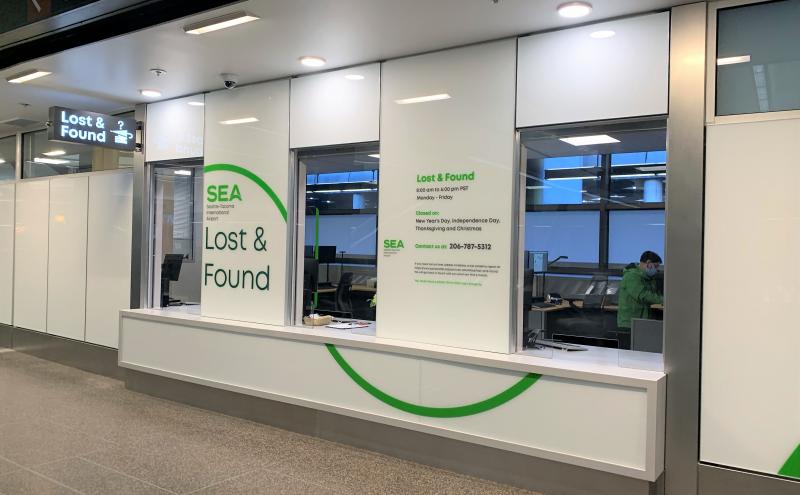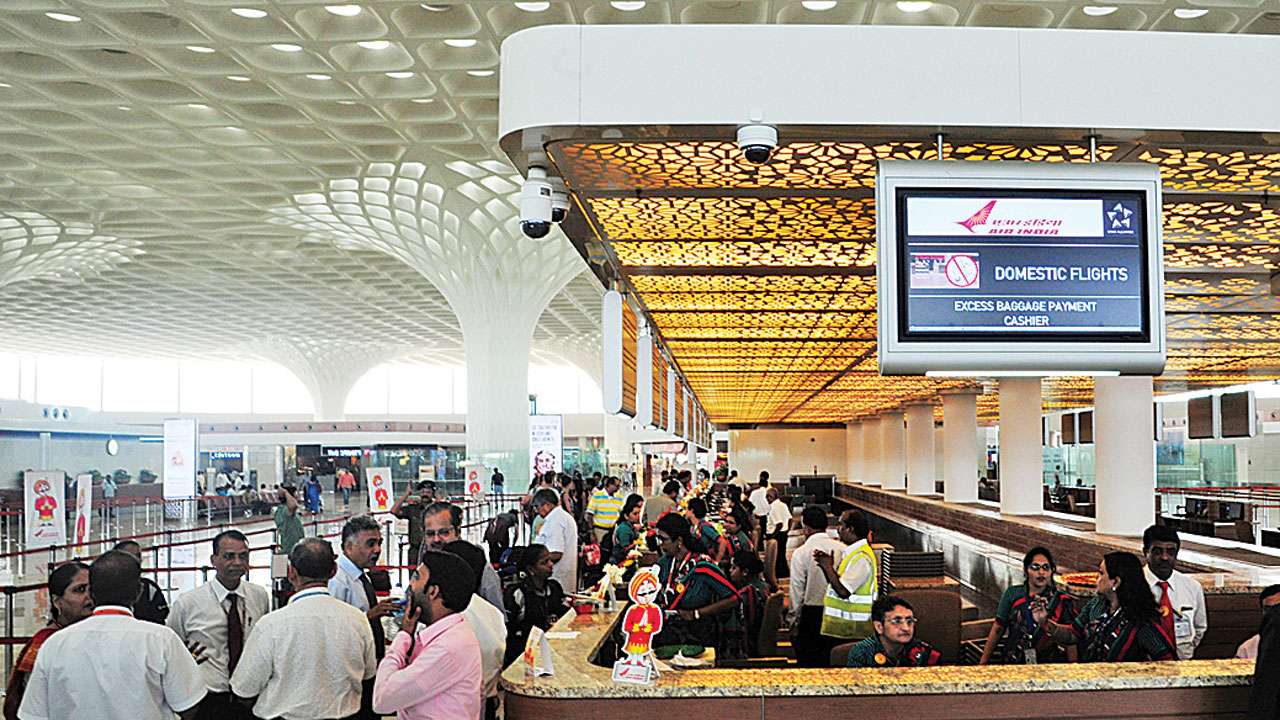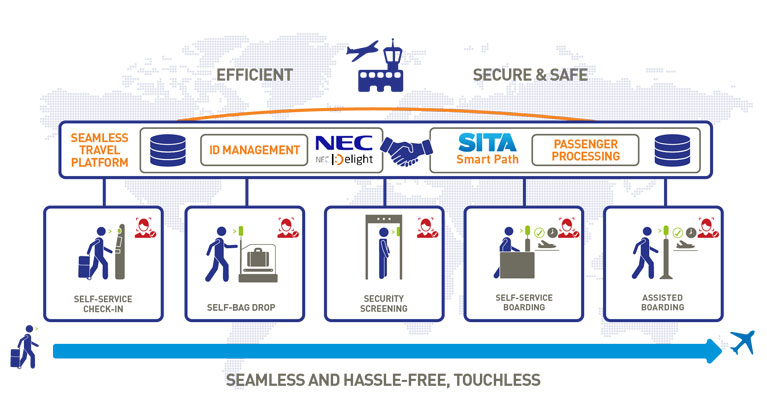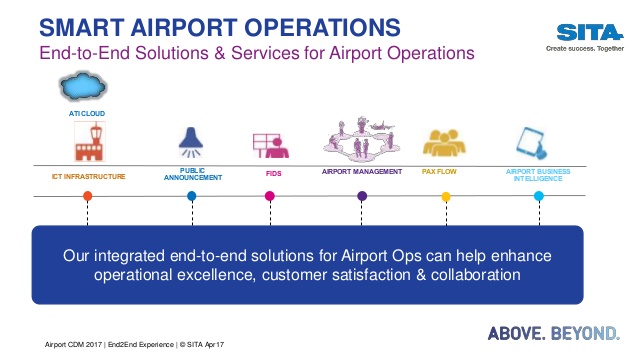Lost and found is a particular place in a building or an institution where all the things which are lost are kept. Individuals can come and check those items out and find out if there is something which they had lost initially.
Items that are lost at the airport are kept for up to 90 days so that it gives the owners enough time to realize that they are missing an item and that they can know that where did they exactly lose it at the airport.
Once the owner of an item realizes that they have lost something at the airport, they can call the airport and ask them about the lost and found department so that the lost item can be described to them, after which they can check to see whether the item is in the lost and found. Some airports also have an online application which an individual can fill out to locate the lost item from the lost and found at the airport.

Rescue of Lost Baggage at Mumbai Airport
If someone loses any baggage or any other item at the Chatrapati Shivaji Maharaj International Airport (CSMIA), they can reclaim the lost item from the Mumbai airport lost and found because all the unclaimed goods and items will go to the lost and found through the duty terminal manager.

SITA launches Al- enabled solution for lost items at airports and it has been of huge help. The SITA company which is the State Information Technology Agency is one of the world’s leading agencies that help in air transport communication and is a specialist in information technology. The SITA company connects the world’s aviation industry and helps in all kinds of issues relating to baggage, operational issues, passenger processes in the air transport, etc.
Some Issues with the Location
However long aircraft have been checking things, they’ve been sending a couple of someplace other than where they should go. Luckily, carriers are improving as of late than they completed 20 years prior, so your odds for a glad consummation have improved for two reasons:
- They’re losing fewer sacks: The public authority has been gathering measurements on misused sack reports for quite a long time, and the quantity of misused pack reports per 100,000 travelers has dropped from a high of seven in the mid-1990s to around three since 2009.

- They’re improving at following the sacks they do lose: With barcoded labels and surprisingly a couple of RFID-empowered labels, the carriers’ frameworks monitor packs. The last multiple times I’ve had a packed issue, a specialist at the lost-stuff work area had the option to advise me promptly where my sack was and the trip on which it would show up.

SITA Launches Al-Enabled Solution

SITA launches their AI-enabled solution for lost items at the airport and the following is what it means:
- The SITA company has launched an Al-enabled solution (artificial intelligence-enabled), which is the World Tracer Lost and Found, which cuts the costs of finding lost items at the airports by 90%. The World Tracer Lost and Found help to trace a particular item that is lost by searching a global database of images to match that particular item. Then, the airport can then notify the owner about the item and then return the lost item to them. This process is completely transparent and the passenger has full visibility of the entire process.
- The expense for dealing with and returning a lost thing, containing enlistment, taking care of requests and client calls, stockpiling, and postage, can go up to $95. WorldTracer Lost and Found Property is the furthest down the line choice to SITA’s WorldTracer arrangement utilized in 2,200 air terminals across the world and will help lessen the cost of returning lost things to their proprietors by 90%.
- The WorldTracer administration is a completely contactless strategy empowering travelers to report deferred stuff from a cell phone and avoid long lines at things administration counters. The new arrangement will smooth out and accelerate the way toward taking care of lost things, which is as yet done physically by and large. With the assistance of the help, aircraft workers can produce a missing thing report, register a discovered thing and verify a match within two minutes.
- Furthermore, travelers would now be able to enter a case utilizing their cell phone for revealing, paying, and organizing bringing home, which empowers them to keep a tab on their thing at each stage. For matching the discovered thing to a missing thing report, the arrangement considers a worldwide information base of pictures and portrayals by utilizing AI, including PC vision, AI and that’s just the beginning.
This lost baggage tracking is a contactless way for the passengers to report the lost items and thereby proving to be user-friendly in this situation of the Covid-19 pandemic.
Getting Better At It!
SITA has proved to be the most helpful and important part of air transport and it keeps getting better.

No one likes their luggage getting lost or misplaced. The following are some of the ways by which one can prevent that:
- Put your name and mobile phone number outwardly and within your packs, and incorporate a movement agenda. Gear labels can undoubtedly be detached in the crude taking care of interaction, however, a name and contact information—alongside a duplicate of your schedule—put on top of your possessions inside your sack will in all likelihood wait.
- Snap a photo of your gear since, supposing that it is lost then a photographed proof will help. Snap a photo of the outside of your sack to show the carrier staff part who is assisting you with finding it. Snap an image within your pack also; this will prove to be useful on the off chance that you need to record a protection guarantee for your lost things. It’s likewise insightful to take a fast photograph of your baggage carousel ticket, on the off chance that you lose it.
- Try not to put assets or “can’t be without it” things in your checked stuff (medication, significant papers, adornments, PCs). Pack all such things in your lightweight suitcase.
- Ensure the individual who checks your stuff appends the right objective pass to each pack and gets a case ticket for each. Continuously eliminate old case labels to forestall the disarray of your objective. Even better, decide on a more astute baggage tag. A few cutting-edge brands of labels include codes or computer chips that voyagers can use to discover lost baggage. Think about Dyno Tags, Super Smart Tags, or Rebound Tags.
- Make a rundown of stuffed things and their assessed esteem before you leave. It sounds monotonous, however, when an aircraft asks what was in your sack, you would prefer not to fail to remember anything of significant worth. If you make a pressing rundown before you travel, hold tight to it—this is a simple method to recall all that you put into your packs. Save receipts for any costly things you pack, as you might be needed to send duplicates of them to the aircraft on account of a lost sack. If you need to check a portion of those things, safeguard them independently: A carrier will not cover them regardless of whether you purchase abundance esteem inclusion.
These are some of the easy steps which one can follow so that they don’t have to deal with the whole lost baggage tracking. Even if they have to, SITA’s Al-enabled solution to find lost items comes in very handy.
Josie Patra is a veteran writer with 21 years of experience. She comes with multiple degrees in literature, computer applications, multimedia design, and management. She delves into a plethora of niches and offers expert guidance on finances, stock market, budgeting, marketing strategies, and such other domains. Josie has also authored books on management, productivity, and digital marketing strategies.


